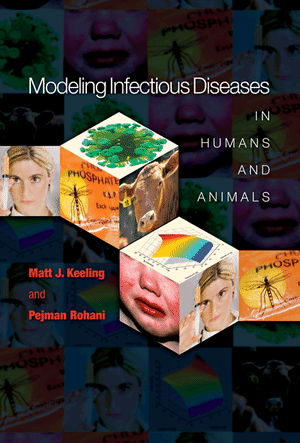The forest-fire model is an example
of a cellular automata. Like coupled lattice models, cellular automata
also use a lattice-based arrangement of sites. However, in contrast to
the lattice-based models discussed above, cellular automata have only a
finite, and usually small, number of population states. Most frequently
we consider each lattice site to represent a single host (a population
size of one).
The forest-fire model is closely
associated with spread of SIRS-type infection and is usually simulated
on a two-dimensional lattice. In the original notation, lattice sites
can be empty, occupied by a healthy tree, or occupied by a burning
tree. Burning trees die to leave empty spaces, fire can spread between
neighboring trees, trees can colonize empty spaces, and occasional
random lightning strikes can cause spontaneous fires. In
epidemiological notation, healthy trees are susceptibles, burning trees
are infectious, empty sites are recovered (and immune), colonization by
trees mimics either the birth of new susceptibles or waning immunity,
and lightning represents the import of infection.
We describe the dynamics in terms of the rates of change of lattice
sites:


